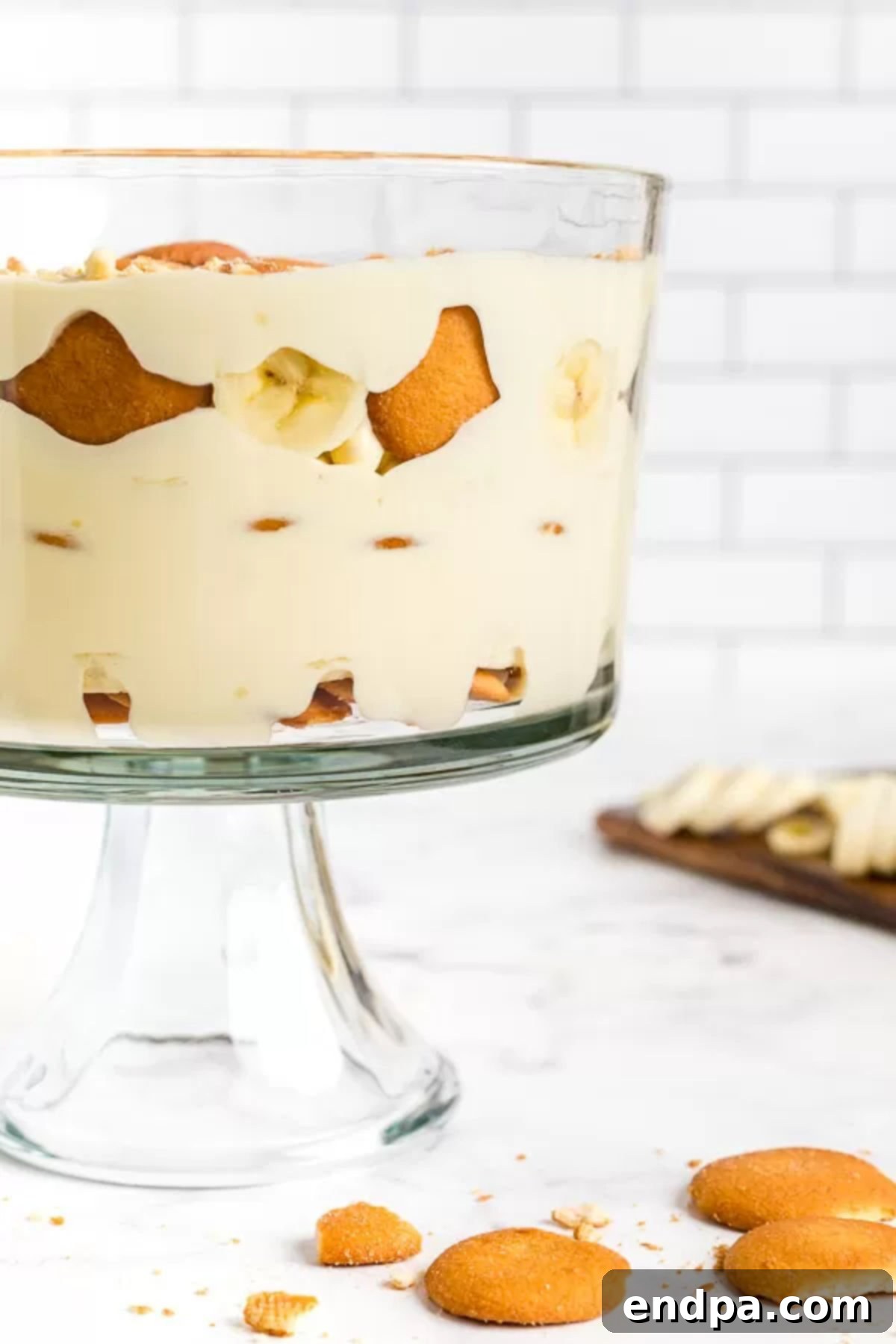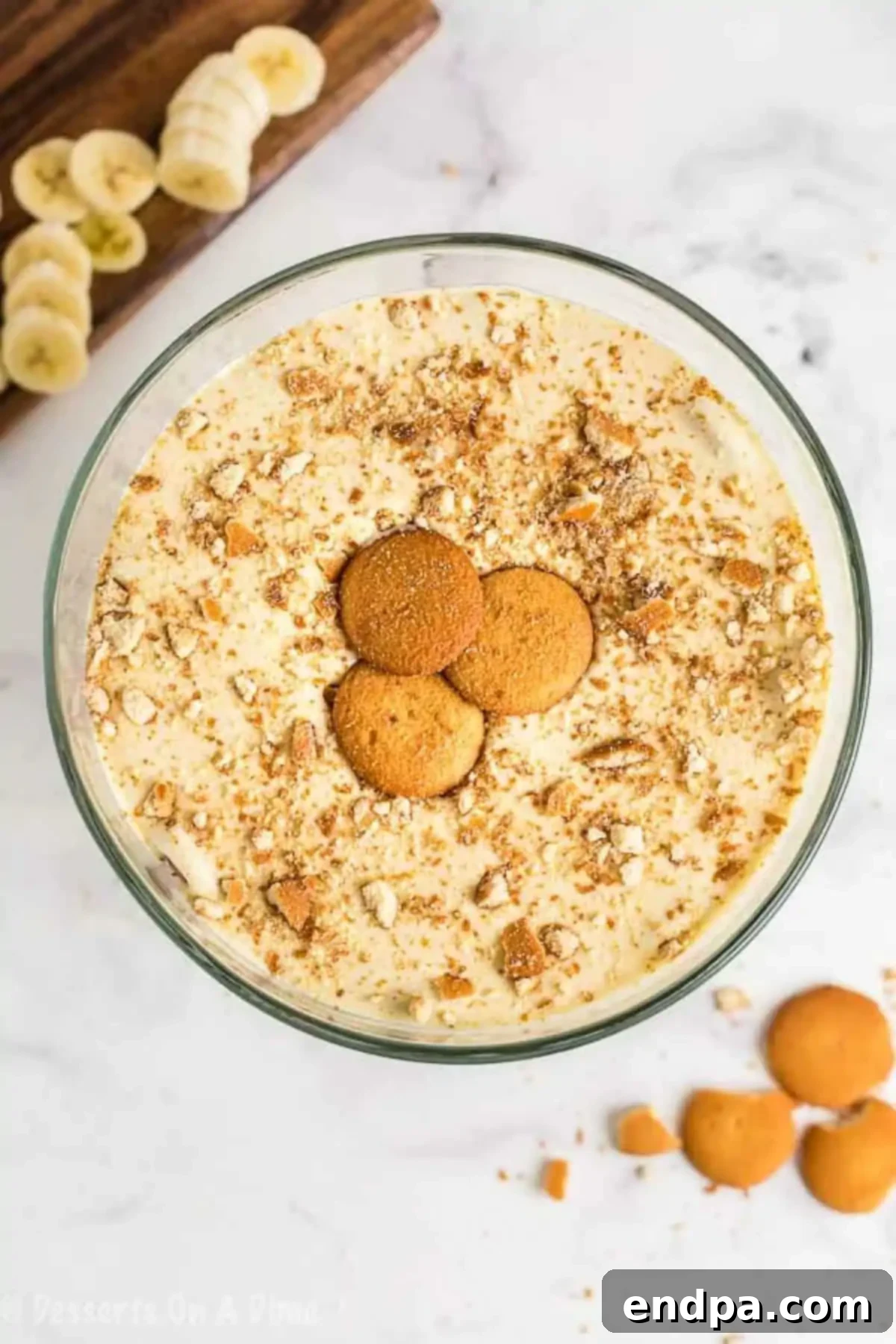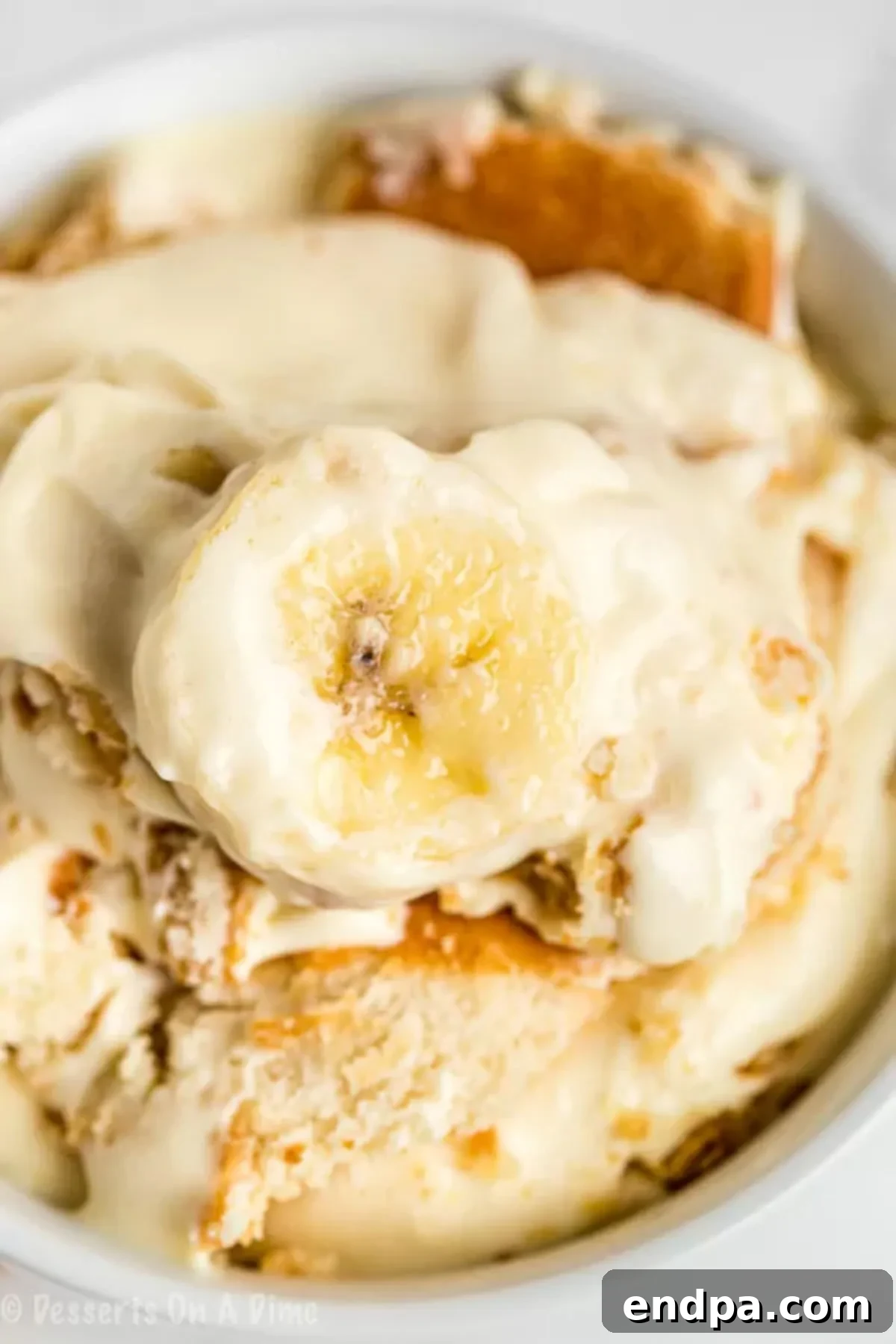Can You Freeze Banana Pudding? Your Ultimate Guide to Freezing & Thawing
If you’ve ever found yourself with leftover banana pudding or wanted to prepare a batch in advance, a common question arises: “Can you freeze banana pudding?” The excellent news is, yes, you absolutely can! Freezing banana pudding is a fantastic way to extend its shelf life, minimize waste, and ensure you always have a delightful treat on hand. However, to maintain that signature creamy texture and beloved flavor, there are specific techniques and crucial steps to follow during both the freezing and defrosting processes. This comprehensive guide will walk you through everything you need to know, from preparation and storage to thawing, ensuring your frozen banana pudding tastes just as heavenly as it did fresh.

Why Freezing Banana Pudding Is a Game-Changer
There are numerous compelling reasons why mastering the art of freezing banana pudding can be incredibly beneficial for any dessert lover:
- Convenience and Ready-to-Eat Treats: Imagine craving a sweet, creamy dessert and having a delicious portion of homemade banana pudding ready to thaw. Freezing allows you to enjoy this classic anytime, eliminating the need for last-minute preparation.
- Waste Reduction: Leftover banana pudding is a rare sight, but when it does happen, freezing prevents it from going to waste. It’s an eco-friendly approach that ensures every spoonful is enjoyed.
- Meal Prepping and Batch Cooking: If you love to bake in larger quantities or prepare desserts for future events, freezing makes it easy. Make a big batch of your favorite banana pudding recipe and freeze individual portions for convenient serving later.
- Preserving Freshness and Flavor: When done correctly, freezing locks in the fresh taste and creamy consistency of your pudding. Our guide ensures that your frozen banana pudding retains its original deliciousness.
- Saving Time: Preparing desserts can be time-consuming. Freezing allows you to do the work once and reap the benefits over several days or weeks, perfect for busy schedules.
By following a few simple guidelines, you can easily preserve your homemade banana pudding, including the delicate whipped cream, creamy mixture, and fresh banana slices, ensuring it maintains its amazing taste and texture.
Understanding Banana Pudding Components and Freezing Challenges
Banana pudding is a symphony of textures and flavors, typically combining a creamy vanilla custard base, sliced fresh bananas, and often vanilla wafers or cookies, topped with whipped cream or meringue. Each component reacts differently to freezing, which is why a strategic approach is key:
- Bananas: Fresh banana slices are prone to browning and can become mushy after freezing and thawing due to their high water content.
- Vanilla Wafers/Cookies: These delicate items can absorb moisture from the pudding and become soggy, losing their characteristic crunch.
- Custard/Pudding Base: The creamy base is the most freezer-friendly component, but improper freezing can lead to ice crystals forming, which affects its smooth texture.
- Whipped Cream/Meringue: Toppings like whipped cream or meringue can deflate, separate, or become watery upon thawing, significantly altering the dessert’s appeal.
Understanding these potential challenges helps us implement the best freezing practices to minimize their impact.

The Essential Guide: How to Properly Freeze Banana Pudding
To successfully freeze banana pudding and preserve its delightful qualities, carefully follow these steps:
- Step 1: Ensure Complete Cooling. This is perhaps the most crucial initial step. Before even thinking about the freezer, your banana pudding must be completely cooled to room temperature, or even better, chilled in the refrigerator. Any residual warmth can create condensation and excessive moisture, which leads to the formation of large, undesirable ice crystals that will ruin the creamy consistency of your vanilla custard base.
- Step 2: Choose the Right Freezer-Safe Container. The type of container you use makes a significant difference. Opt for an airtight, freezer-safe container or pan. Glass or sturdy plastic containers with tight-fitting lids are ideal. Avoid using freezer bags for the main pudding mixture as they offer less structural protection and can expose more surface area to air, increasing the risk of freezer burn. If freezing individual portions, small ramekins or single-serving containers are excellent choices.
- Step 3: Strategically Handle Wafers and Toppings. If your banana pudding recipe includes vanilla wafers, Nilla wafers, or similar cookies, it’s best to layer them on top of the pudding rather than mixing them in completely. This minimizes their exposure to moisture, helping them retain more of their texture. For optimal results, consider omitting wafers and fresh toppings like whipped cream or meringue until after the pudding has thawed. You can then add fresh, crunchy wafers and a dollop of freshly whipped cream just before serving for the best experience.
- Step 4: Prevent Banana Browning. To minimize the browning of banana slices, you can gently toss them with a small amount of lemon juice (about ½ teaspoon per banana) before adding them to the pudding. While freezing itself slows browning, this extra step helps preserve their color. Alternatively, use slightly under-ripe bananas which tend to hold their shape better after thawing.
- Step 5: Avoid Overfilling the Container. Remember that liquids expand when they freeze. Leave about an inch of headspace at the top of your container to accommodate the pudding as it expands. Overfilling can lead to cracked containers or lids popping off, compromising the seal and increasing the risk of freezer burn.
- Step 6: Add a Protective Layer of Plastic Wrap. Before securing the lid, place a sheet of plastic wrap directly onto the surface of the pudding. Press it gently to ensure it makes contact with the entire surface, eliminating air pockets. This crucial step acts as an extra barrier against air exposure, significantly preventing freezer burn and keeping the top layer of pudding from drying out or absorbing freezer odors.
- Step 7: Seal and Label Your Container. Once the plastic wrap is in place, firmly put the lid on the container, ensuring it’s completely sealed. Then, label the container with the contents (“Banana Pudding”) and the date of freezing. This will help you keep track of its freshness and ensure you consume it within its optimal storage time.
- Step 8: Optimal Freezer Placement. Place the labeled container in a flat, stable area of your freezer where it won’t be disturbed. A consistent freezer temperature (0°F / -18°C or colder) is ideal for long-term storage and maintaining food quality.
By diligently following these steps, you are setting your frozen banana pudding up for success, ensuring it maintains its delicious flavor and creamy texture when you’re ready to enjoy it.
How to Defrost Banana Pudding Perfectly
The defrosting process is just as critical as freezing when it comes to maintaining the quality of your banana pudding. Rushing this step can undo all your careful preparation. Here are the recommended methods for thawing:
- Step 1: Gradual Thawing in the Refrigerator. The best and safest method to defrost banana pudding is slowly in the refrigerator. Transfer the frozen container of pudding from the freezer to your fridge. Depending on the size and thickness of the pudding, this can take several hours, typically 8-12 hours for a larger batch, or even overnight. This slow thawing allows the ice crystals to reabsorb into the pudding mixture gradually, helping to preserve its smooth texture.
- Step 2: Alternative: Cold Water Bath (for faster thawing). If you’re short on time, you can speed up the defrosting process slightly by immersing the sealed, airtight container of pudding in a bowl of cold water. Change the water every 30 minutes to ensure it remains cold. This method is faster than refrigeration but slower than room temperature, offering a good compromise. However, always ensure your container is perfectly sealed to prevent water from seeping in.
- Step 3: Post-Thaw Softening (Optional). Once the banana pudding has fully defrosted in the fridge and is no longer icy or solid, you might find it slightly firm. For an even creamier, melt-in-your-mouth experience, you can let the bowl sit at room temperature for 15 to 20 minutes before serving. This brief period helps soften the pudding to its ideal consistency.
Important Warning: Do NOT use a microwave or hot water to speed up the defrosting of banana pudding. Doing so can cause uneven thawing, leading to hot spots and cold spots, and will severely negatively impact the pudding’s delicate texture and quality. The high water content in banana pudding makes it particularly susceptible to becoming watery, gummy, or separated if subjected to rapid or high heat thawing. Patience truly is a virtue here.
Once thoroughly defrosted and, if desired, topped with fresh wafers and whipped cream, your banana pudding will taste as good as it did when it was first prepared, proving that freezing is a viable option for this classic dessert.
Frequently Asked Questions About Freezing Banana Pudding
Yes, you can freeze banana pudding with Nilla wafers or Chessman cookies, but with some important considerations. The texture of wafers can change significantly after freezing and thawing, often becoming soft or mushy. To mitigate this, consider adding them just before serving after the pudding has thawed. If you must freeze them with the pudding, place them in a single layer on top of the pudding. This minimizes their direct contact with the pudding’s moisture, helping them retain a bit more crispness than if they were mixed throughout. Opt for sturdier vanilla wafers if freezing with them is unavoidable.
The shelf life of homemade banana pudding varies depending on its ingredients and storage method:
- In the Refrigerator: If your homemade banana pudding contains dairy ingredients like milk, cream cheese, or cool whip, it should typically be consumed within 3 to 4 days when stored in an airtight container in the refrigerator. Dairy products are perishable and can spoil quickly. For dairy-free versions, it might last up to a week in the fridge, again, in an airtight container.
- In the Freezer: When properly stored in an airtight, freezer-safe container, banana pudding can be kept in the freezer for up to 2 weeks (approximately 14 days) for optimal quality. While it might be safe to eat for longer, the texture and flavor can start to degrade after this period. Always label your container with the date of freezing to keep track. When it comes to food safety, trust your senses: if anything looks or smells off, it’s best to discard it.
Freezing banana pudding with meringue or whipped cream toppings is generally not recommended for the best results. Meringue tends to weep and become rubbery or chewy, while whipped cream can deflate, become watery, and separate upon thawing. For the finest quality, it’s always best to add these delicate toppings fresh after the pudding has been thawed and is ready to serve. This ensures your dessert has that perfect light and airy finish.
Absolutely! Freezing banana pudding in individual portions is a highly convenient option. Small freezer-safe ramekins, Mason jars, or even muffin tins (once frozen solid, transfer to a freezer bag) are excellent for this. This method allows you to thaw only what you need, reducing waste and making it easier to enjoy a single serving without committing to a whole batch. Just ensure each portion is sealed properly to prevent freezer burn.
Freezer burn occurs when food is exposed to air, leading to dehydration and flavor loss. To prevent it with banana pudding, ensure it’s completely cooled before freezing. Use an airtight, freezer-safe container with minimal empty space. Most importantly, press a layer of plastic wrap directly onto the surface of the pudding before sealing the container. This creates a barrier against air, significantly reducing the risk of freezer burn.

Creative Ways to Enjoy Frozen & Thawed Banana Pudding
Beyond simply eating it as is, thawed banana pudding can inspire various culinary creations:
- Refresh with Fresh Toppings: Always add fresh whipped cream, crunchy vanilla wafers, or even a sprinkle of toasted coconut flakes just before serving.
- Pudding Parfaits: Layer thawed pudding with granola, fresh berries, or even crumbled cookies for a delightful parfait.
- Banana Pudding “Pops”: While this guide focuses on traditional pudding, a slightly thicker, frozen banana pudding can be great on a stick for a summer treat.
- Dessert Shots: Serve individual portions in small shot glasses, perhaps topped with a mini wafer and a dollop of whipped cream for an elegant presentation.
More Delicious Banana Pudding Desserts
If you love banana pudding, you might also enjoy experimenting with these creative variations:
- Banana Pudding Fluff Recipe
- Banana Pudding Cookies Recipe
- Banana Pudding Poke Cake Recipe
Essential Freezer Storage Tips for Desserts
Expanding your freezer knowledge can help preserve many other delightful treats:
- How to Freeze Cookie Dough
- Can You Freeze Fudge
- Can you Freeze Cake Pops
- Can You Freeze Pound Cake?
Freezing banana pudding is not just possible; it’s a smart and simple way to enjoy this beloved dessert whenever the craving strikes. By paying attention to the details of proper preparation, sealing, and gentle thawing, you can ensure that every spoonful of your homemade banana pudding remains a delightful experience, full of creamy texture and rich flavor. So go ahead, make an extra batch, and confidently store it in your freezer for a sweet treat anytime. Try freezing banana pudding today, and let us know how it turned out in the comments below!
